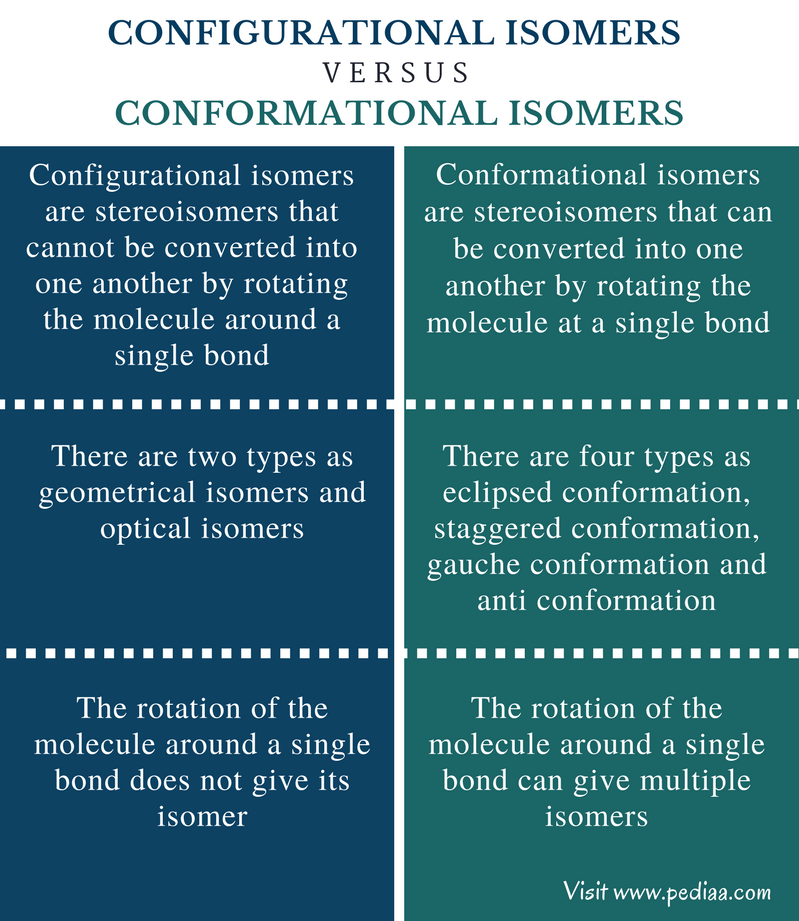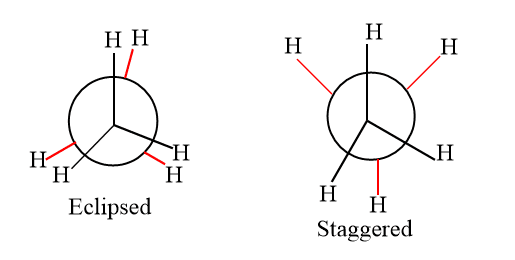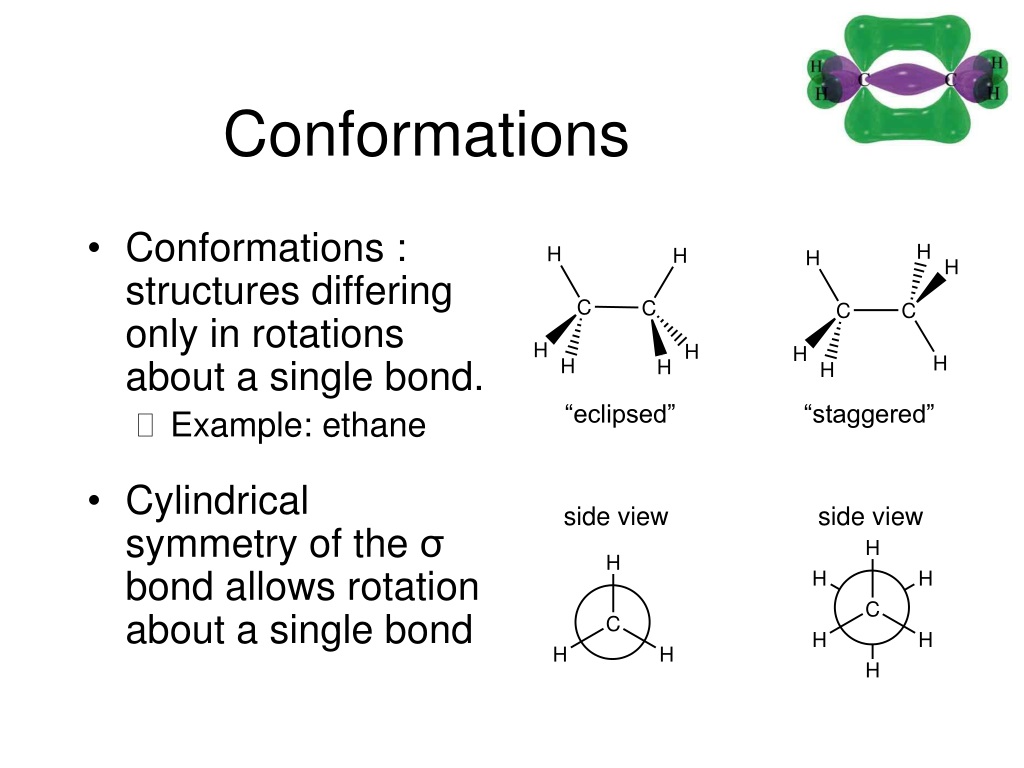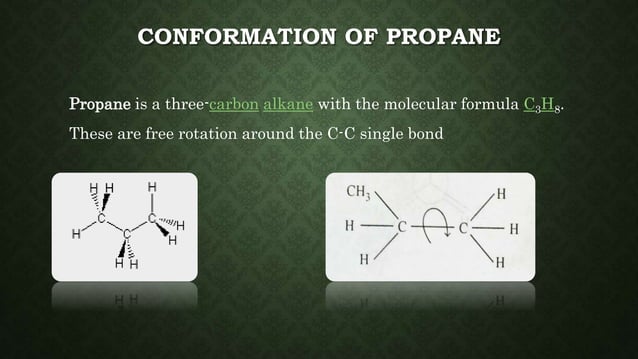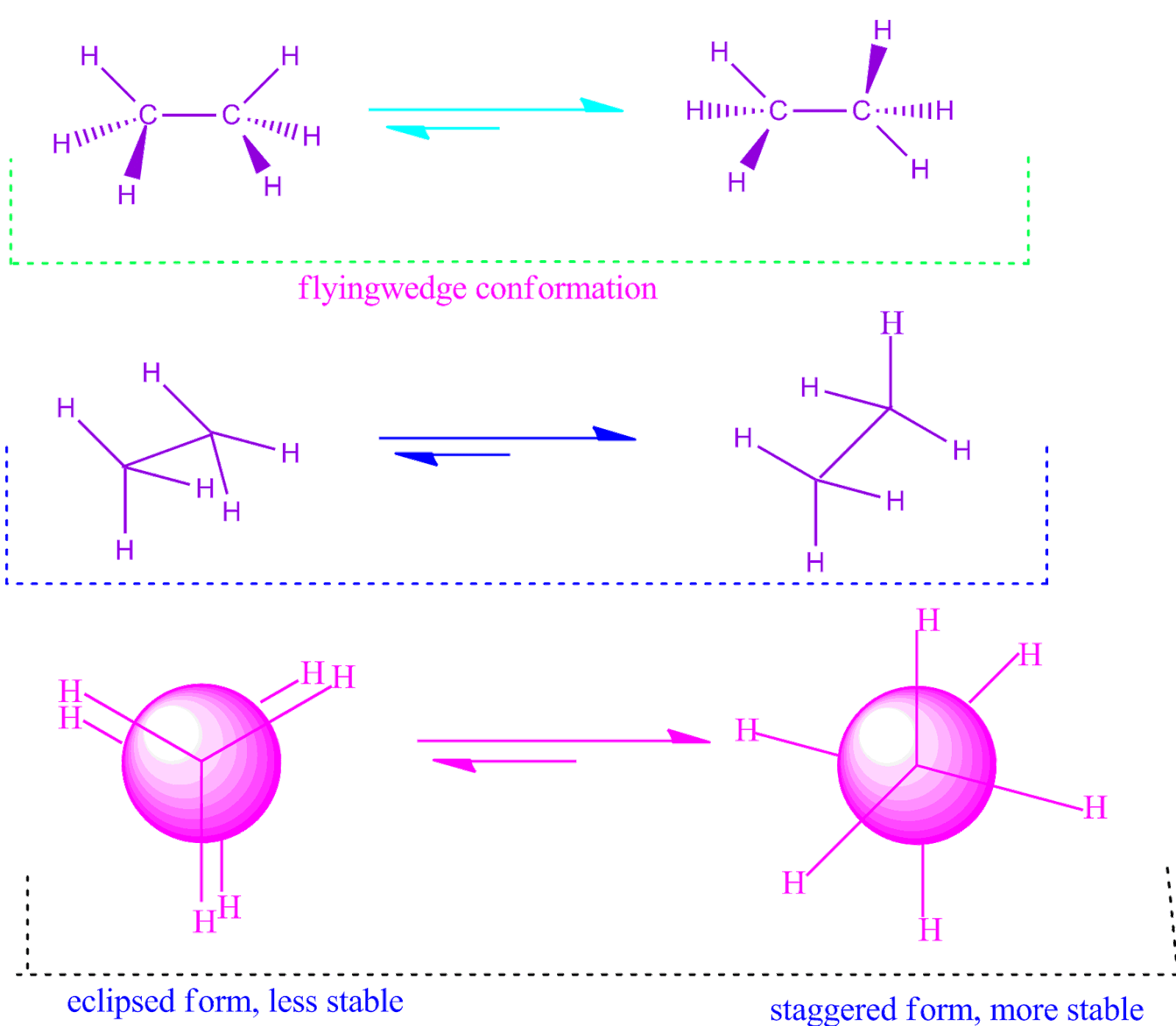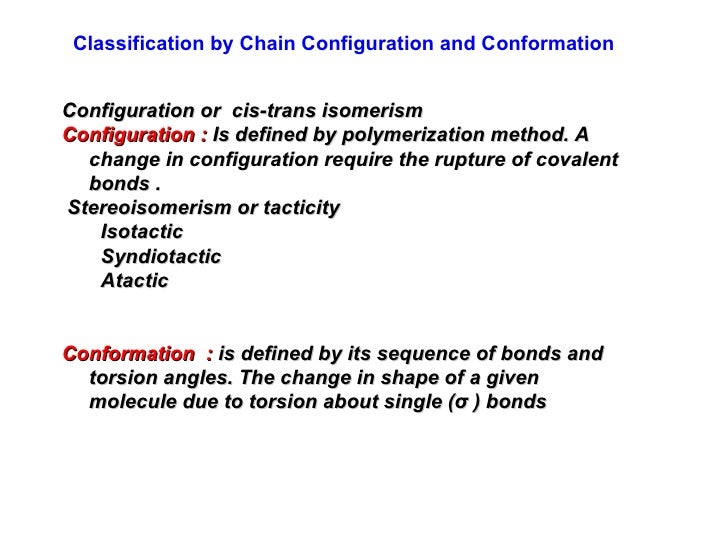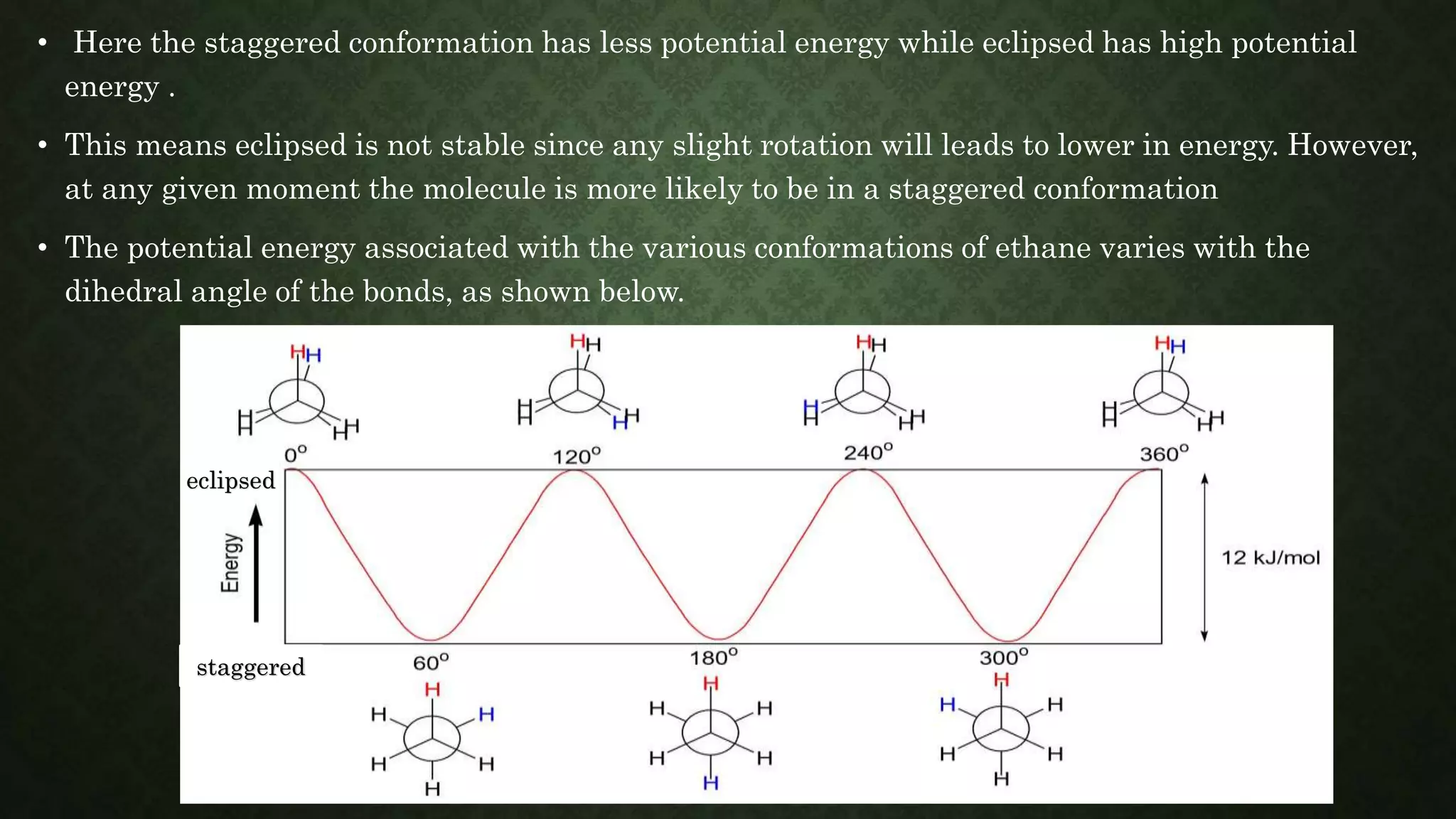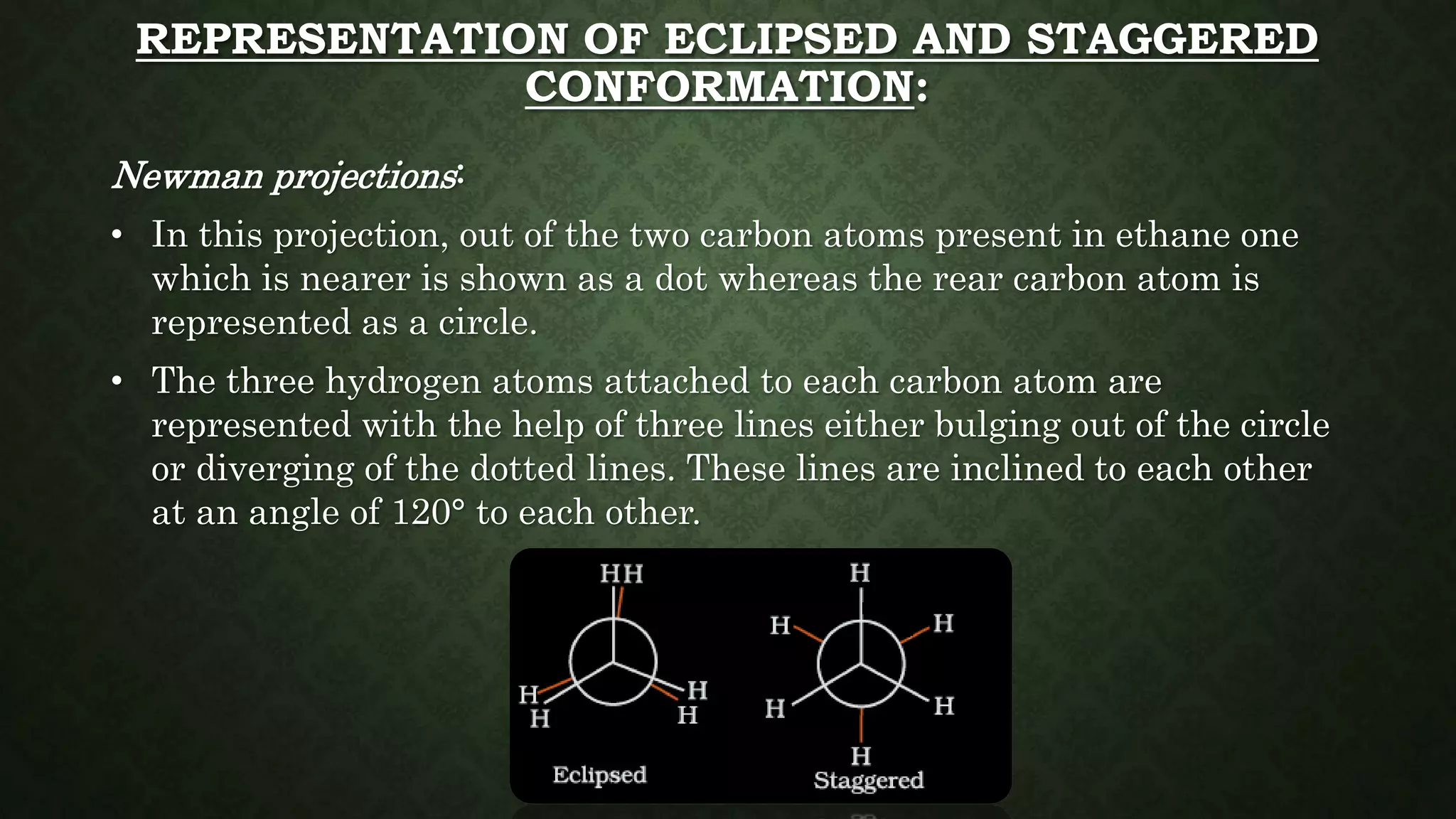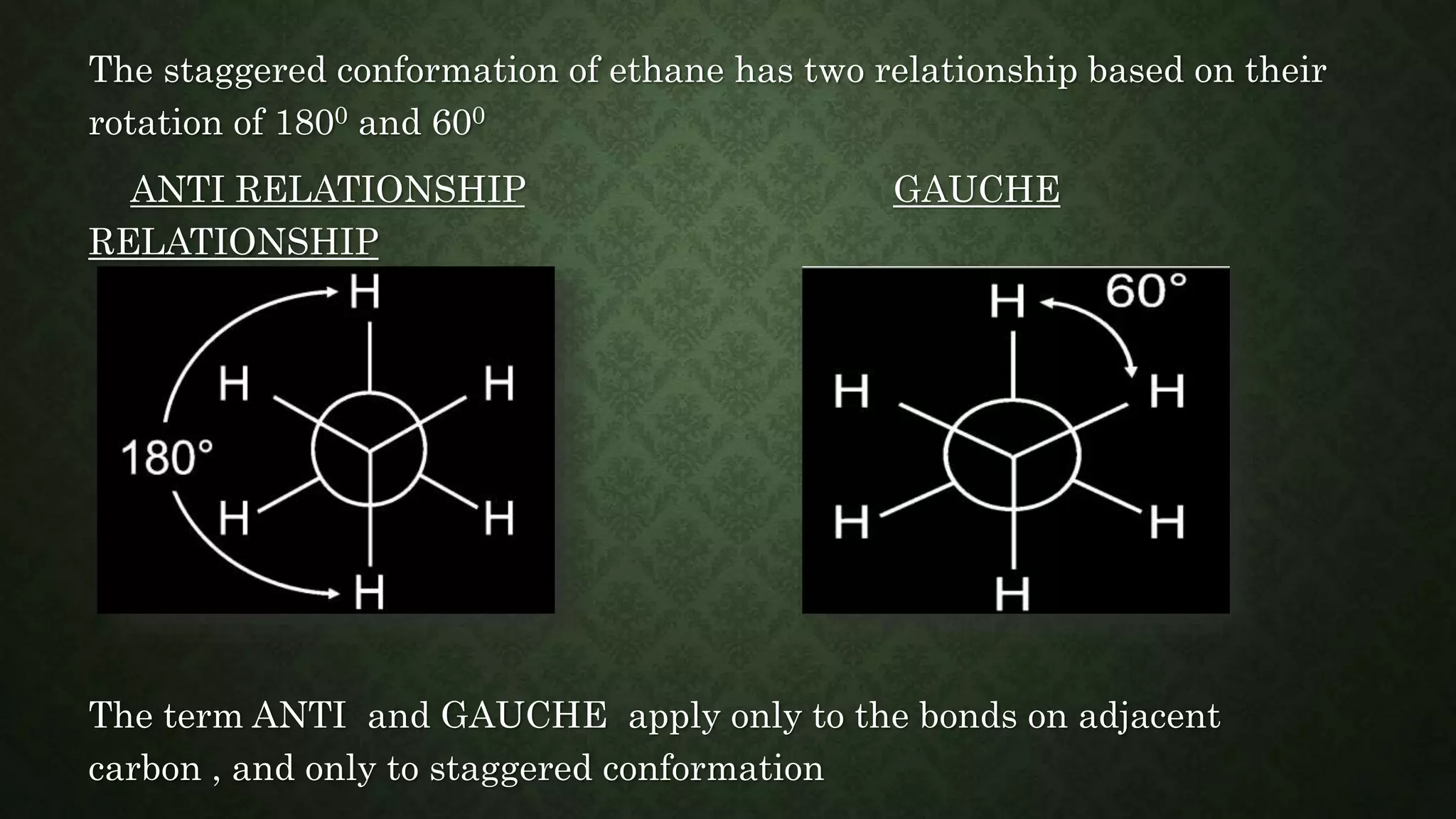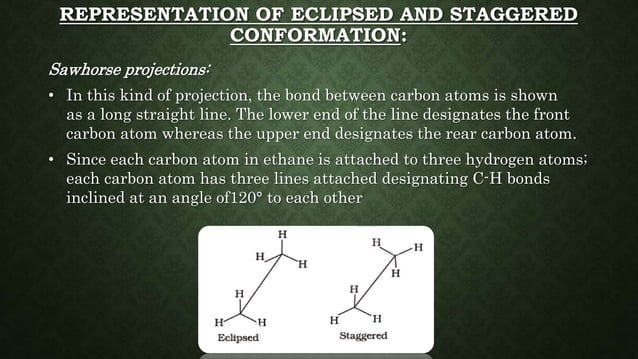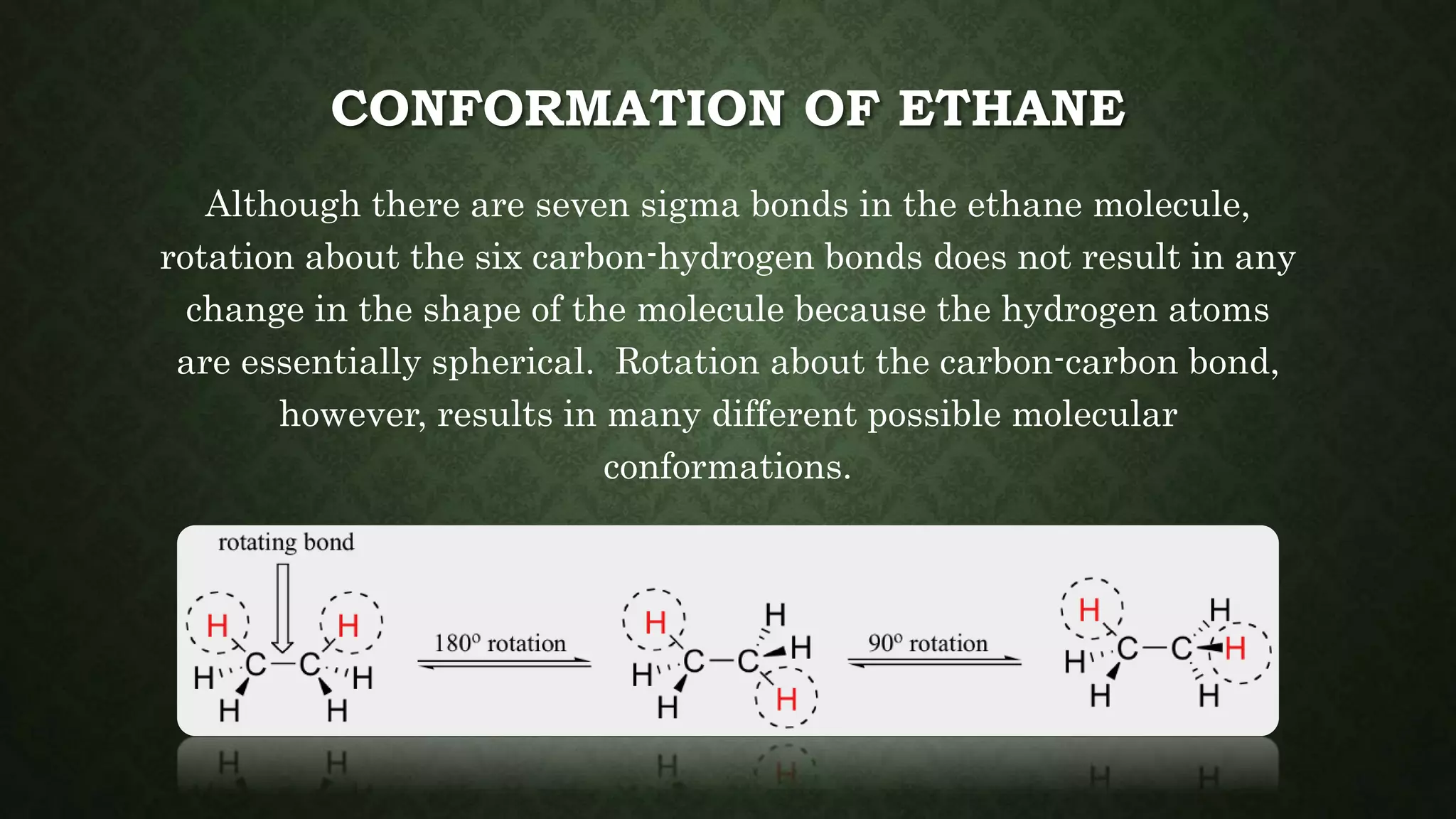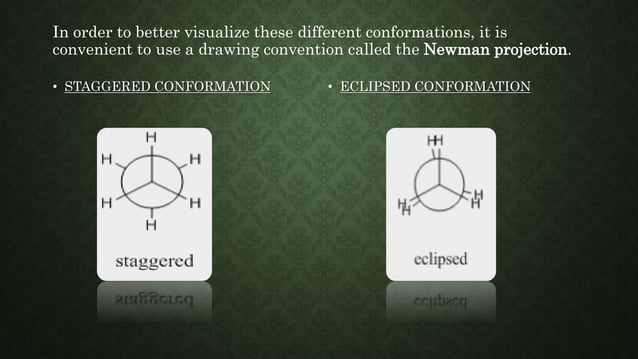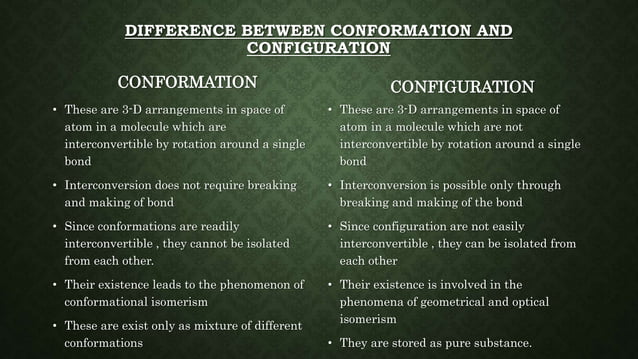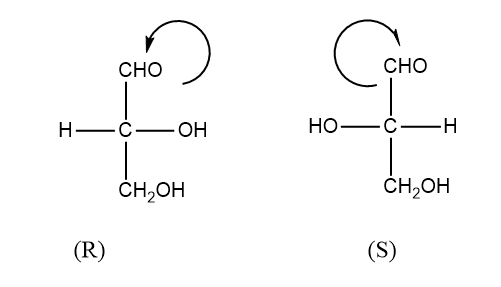Difference Between Conformation And Configuration Ppt
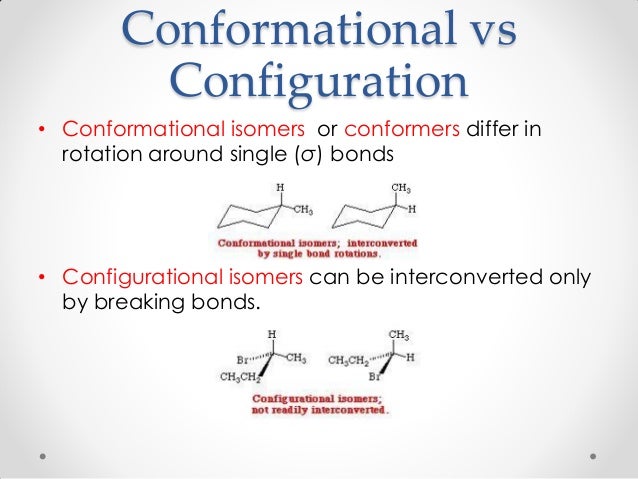
In the intricate world of chemistry, particularly organic chemistry, the subtle dance of molecules dictates their properties and interactions. Understanding the nuanced differences between molecular conformation and configuration is paramount for scientists, researchers, and students alike. A misconception in this area can lead to misinterpretations of reaction mechanisms and incorrect predictions of molecular behavior.
At the heart of this issue lies the distinction between changes that require bond breaking and those that don't. The nut graph explains that conformation refers to the different spatial arrangements of a molecule that arise from rotation around single bonds, whereas configuration refers to arrangements that can only be interconverted by breaking and reforming chemical bonds. Confusing these terms can result in critical errors in understanding chemical processes, necessitating a clear and concise understanding.
Conformation: A Dynamic Dance
Conformational isomers, or conformers, are readily interconvertible. These interconversions typically occur at room temperature. Imagine a simple molecule like ethane (C2H6); the hydrogen atoms can rotate around the central carbon-carbon single bond.
This rotation leads to different spatial arrangements, such as staggered and eclipsed conformations. These conformations represent energy minima and maxima, respectively.
Energy Barriers and Rotational Freedom
The energy difference between various conformers is usually small, allowing for free rotation at room temperature. However, bulky substituents on the carbon atoms can increase the energy barrier, hindering rotation.
This restricted rotation can lead to the existence of distinct conformers that can be observed at lower temperatures. These observations are critical for understanding the dynamics of complex molecules such as proteins.
Configuration: A Matter of Bond Integrity
Unlike conformations, configurational isomers cannot be interconverted without breaking chemical bonds. This includes both enantiomers and diastereomers.
Enantiomers are non-superimposable mirror images of each other. They arise when a molecule contains a chiral center, typically a carbon atom bonded to four different groups.
Enantiomers and Optical Activity
Enantiomers exhibit identical physical properties except for their interaction with plane-polarized light. One enantiomer will rotate the light clockwise (dextrorotatory), while the other rotates it counterclockwise (levorotatory).
Diastereomers, on the other hand, are stereoisomers that are not mirror images of each other. They can arise from multiple chiral centers or from geometric isomerism, such as cis-trans isomers in alkenes.
Diastereomers: Diverse Properties
Unlike enantiomers, diastereomers possess different physical and chemical properties. This difference is due to the different spatial arrangements of the substituents.
These differing properties make diastereomers easier to separate and distinguish from each other.
Distinguishing Conformation from Configuration: A Summary
The key difference lies in the necessity of bond breaking. Conformational changes involve rotations around single bonds, requiring no bond breakage.
Configurational changes, however, require breaking and reforming bonds to interconvert the isomers. This bond breakage leads to distinct molecular structures with fundamentally different properties.
Tools like Nuclear Magnetic Resonance (NMR) spectroscopy can be used to observe conformational changes, particularly at variable temperatures. X-ray crystallography is used to determine the absolute configuration of molecules.
Implications and Future Directions
A thorough understanding of both conformation and configuration is essential for predicting molecular behavior. It allows for the rational design of drugs, catalysts, and materials with desired properties.
Researchers continue to develop sophisticated computational methods. These methods simulate molecular dynamics and predict conformational landscapes with increasing accuracy.
As technology advances, future research will focus on creating molecules with tailored conformational preferences and configurations. These developments promise to revolutionize fields ranging from medicine to materials science.
